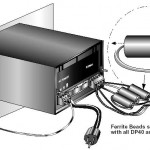Things to consider before starting a CCTV installation project
There are quite a few things to consider before you start a CCTV installation project. This can be anything simple as selecting cameras to complicated things like deciding the right cables or switching to IP cameras. Below article helps you to understand more about some of the key questions you may have in regard to your CCTV project.
Differences between analogue and digital CCTV cameras.
Video footages are transmitted in two different technologies, in an analog camera signals are transmitted as electric pulses of varying amplitude, where else in digital CCTV cameras signals are transmitted as digital data packets using binary 1’s and 0’s. As electromagnetic interference are analog in nature, digital signals are free from EMI. Analog camera transmission can be done in real time and less bandwidth required, analog cameras are low cost cameras, no need for any IT back ground to install them, less impedance and IP camera digital signals are normally with 100megaohm and require some experience with IT to install them.
What are the recording resolutions available in a digital video recorder?
DVR comes with various recording resolutions. D1, CIF, 2 x CIF, QCIF
Video compression in context of H.264 and MPEG
H 264 and MPEG belongs to two different organisations. Moving picture expert group (MPEG) is an authority formed by ISO and IEC to set standards for video transmission. The latest technique used by them is MPEG-4 AVC which is used in Blu-ray players and DVD’s.
ITU-T H 264 or H 264 is widely used in internet medium such as you tube, apple store, abode players and other leading internet platforms. H 264 is seen as a widely used video compression technology in CCTV industry. However, H 264 compression make the video quality less but make it easy to travel.
Differences between CAT6 and Coax cable in CCTV installation
CAT6 cable is much better resistant than RG59 or coax cable. As CAT6 is twisted pairs and they use common mode rejection to induce interference. As both core are connected to the inputs of different amplifiers, they can cancel the induced voltage.
To achieve EMC compliance, it is required clamp (RS part 116-1487) a ferrite core to the cable.
In summary, you should have a well prepared plan and execute it in accordance with all compliance’s.

